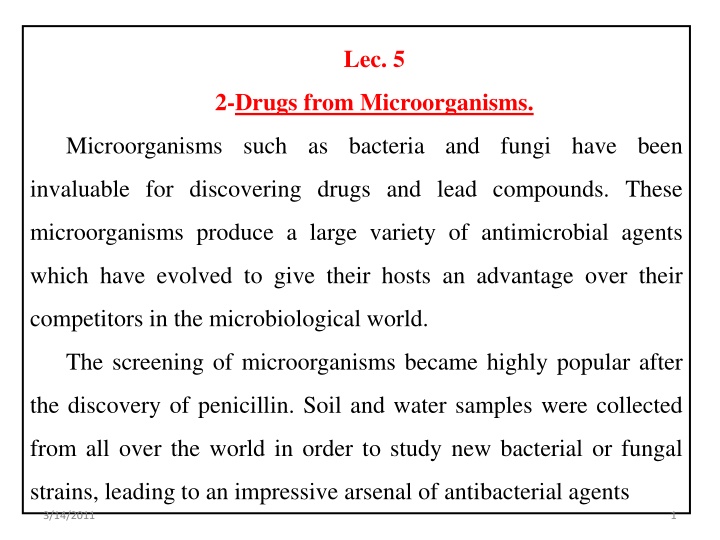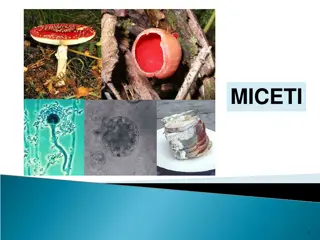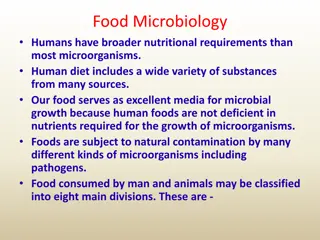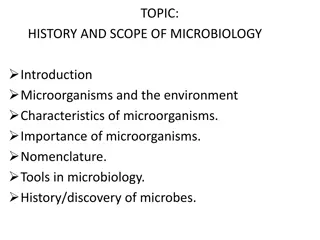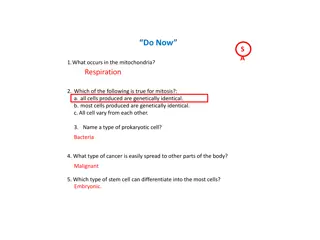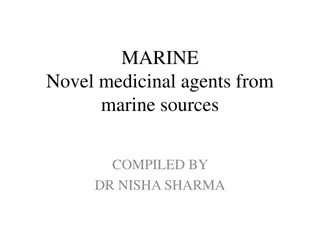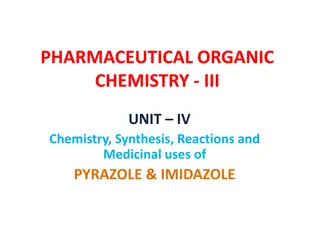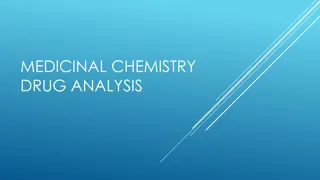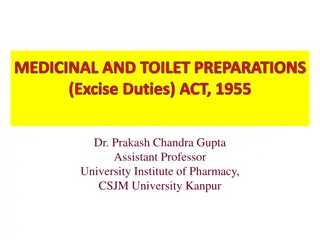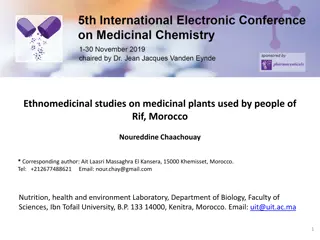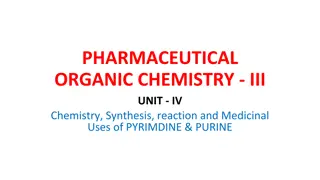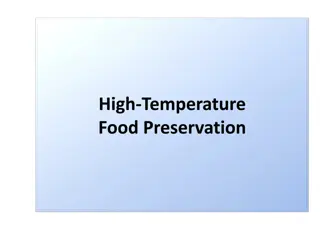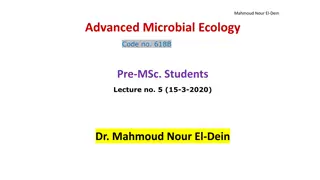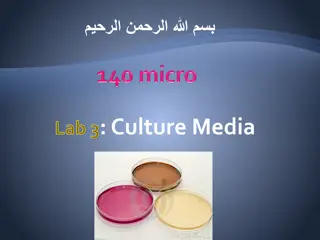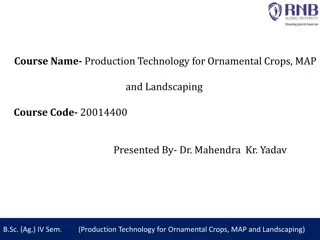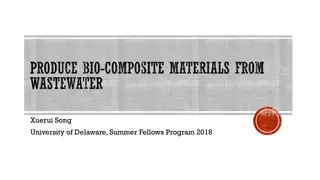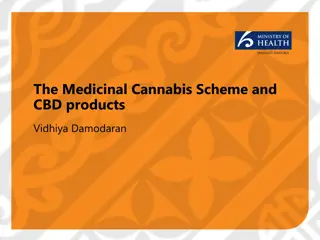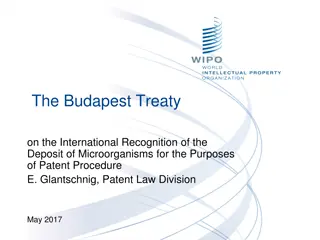Microorganisms: A Treasure Trove of Medicinal Compounds
Microorganisms like bacteria and fungi have been crucial in the discovery of drugs, especially antibiotics. The screening of microorganisms has led to the identification of various bioactive substances with therapeutic applications spanning from antibacterial agents to anti-cancer drugs. The success of penicillin paved the way for further exploration of microbial sources for drug discovery, resulting in a diverse range of pharmaceutical products like acarbose for diabetes treatment. This article highlights the valuable contributions of microorganisms in the field of medicine.
Download Presentation

Please find below an Image/Link to download the presentation.
The content on the website is provided AS IS for your information and personal use only. It may not be sold, licensed, or shared on other websites without obtaining consent from the author.If you encounter any issues during the download, it is possible that the publisher has removed the file from their server.
You are allowed to download the files provided on this website for personal or commercial use, subject to the condition that they are used lawfully. All files are the property of their respective owners.
The content on the website is provided AS IS for your information and personal use only. It may not be sold, licensed, or shared on other websites without obtaining consent from the author.
E N D
Presentation Transcript
Lec. 5 2-Drugs from Microorganisms. Microorganisms such as bacteria and fungi have been invaluable for discovering drugs and lead compounds. These microorganisms produce a large variety of antimicrobial agents which have evolved to give their hosts an advantage over their competitors in the microbiological world. The screening of microorganisms became highly popular after the discovery of penicillin. Soil and water samples were collected from all over the world in order to study new bacterial or fungal strains, leading to an impressive arsenal of antibacterial agents 3/14/2011 1
Drugs from Microorganisms. It was realized that microorganisms such as actinomycetes and fungi not only produce secondary metabolites that affect cell growth but also accumulate bioactive principles that interact with valuable targets of cell metabolism. The discovery of penicillin in 1928 by Alexander Fleming and its introduction in 1940/41 as an efficient antibacterial therapeutic without side effects revolutionized medicinal chemistry and pharmaceutical research by stimulating completely new strategies in industrial drug discovery. 3/14/2011 2
* The success of penicillin in treating infection led to an expansion in the area of drug discovery from microorganisms. * Microorganisms are a plentiful source of structurally diverse bioactive substances, and have provided important contributions to the discovery of antibacterial agents including penicillins, cephalosporins, aminoglycosides, tetracyclines, and polyketides. * Current therapeutic applications of metabolites from microorganisms have expanded into immunosuppressive agents (eg, cyclosporins and rapamycin), cholesterol-lowering agents (eg, lovastatin and mevastatin), an antidiabetic agent (acarbose), and anti cancer agents (eg, pentostatin, peplomycin, and epirubicin). 3/14/2011 3
Penicillin Penicillin was discovered in 1928 by Alexander Fleming by chance from the culture borth of Penicillium notatum as a bioactive principle inhibiting growth of gram positive bacteria. Penicillin G 3/14/2011 4
Antidiabetic Drgus Acarbose is a natural drug accounting considerable success on the market, it criticized as being misused by people to reduce their weight. Acarbose was discovered in the target-directed screening from culture broth of neglected genera of actinomycetes calledActinoplanes sp. by researchers at the German company Bayer in 1970s. Acarbose inhibits enzymes (glycoside hydrolase) needed to digest carbohydrates, it is an inhibitor of alpha glycosidase, an enteric enzyme that releases glucose from larger carbohydrates. Acarbose was first launched by Bayer in Germany under the trade name of Glucobay in 1990. 3/14/2011 5
Acarbose 3/14/2011 6
Antidiabetic Drgus The pseudo-disacharide moiety of the pseudo-tetrasacharide acarbose strongly inhibits the intestine located enzymes of alpha glycoside type by mimicking a disaccharide part of the starch molecule or related nutrient polymers which functions as the natural substrate of the target enzyme. http://upload.wikimedia.org/wikipedia/commons/thumb/8/8f/Acarbose_structure.svg/220px-Acarbose_structure.svg.png 3/14/2011 7
Immuno suppressant drugs. Cyclosporin A was identified as an antifungal agent isolated from culture broths of the fungus Tolypocladium inflatum, from the pharmacological studies cyclosporine displayed remarkable immunosuppressant properties. Cyclosporin A 3/14/2011 8
Anicancer drugs. Several compounds derived from the screening of culture broths from microorganisms towards anticancer drugs are in preclinical or clinical trials to study their therapeutic value. Examples are the extremely toxic enediynes from actinomycetes. File:Neocarzinostatin.png Neocarzinostatin 3/14/2011 9
3-Marine natural products: * Unlike the long-standing historical medical uses of terrestrial plants, marine organisms have a shorter history of utilization in the treatment and/or prevention of human disease. * In recent years, there has been a great interest in finding lead compounds from marine sources such as coral, sponges and fishes. * The marine environment is frequently recognized as the largest potential source of biodiversity, and it is being increasingly searched for novel chemicals with useful bioactivity. * In 2004, 716 new marine compounds were described in the literature and a further 812 in 2005. * The range of chemical diversity is staggering, as is the range of organisms. Several marine-derived compounds are in clinical trials, particularly as anti-cancer agents. 3/14/2011 10
At least until the arrival of antibiotics such as penicillin, streptomycin, and others, higher terrestrial plants had certainly the strongest impact on drug discovery from natural sources. Oddly enough, even though the oceans cover over 70 % of the earth s surface, they have only comparatively recently attracted the serious attention of drug prospectors, which is in sharp contrast to the important and long-standing impact of the sea on human nutrition. 3/14/2011 11
Marine natural products chemistry began to focus on the discovery of new potential drugs in 1951 when Bergmann and Feeney reported on the isolation of the unusual nucleosides spongouridin and spongothymidin from the sponge Cryptotethya crypta, which served as lead structures for antiviral drugs. More than a decade later, the discovery of prostaglandins in the Caribbean gorgonian Plexaura homomalla. Also maitotoxin a water soluble polyether-type neurotoxin produced by Gambierdiscus toxicus, it cause death in mice when injected intraperitonally at concentrations of 170 ng per kg. 3/14/2011 12
* Marine compounds have also been found to have other activities, including antibiotic and anti-inflammatory effects. * The peptide ziconotide, a synthetic version of the conotoxin M-VII A discovered in the venom of a cone snail, was recently brought to the market for treating patients with severe chronic pain. * Ziconotide is a highly specific blocker of the calcium ion channels that are involved in the transmission of pain signals in the spinal cord. 3/14/2011 13
File:Maitotoxin.png Maitotoxin 3/14/2011 14
4- Tissue Culture: Plant tissue culture: the growth of plant cells outside an intact plant, it is a technique essential in many areas of the plant sciences. It relies on maintaining plant cells in aseptic conditions on a suitable nutrient medium. The culture can be sustained as a mass of undifferentiated cells for an extended period of time or regenerated into whole plants. 3/14/2011 15
Organ cultures as a source of pharmaceuticals Since production of secondary metabolites is generally higher in differentiated tissues, there are attempts to cultivate shoot cultures and root cultures for the production of medicinally important compounds, these organ cultures are relatively more stable . There are a number of medicinal plants whose shoot cultures have been studied for metabolites. Similarly, root cultures are valuable sources of medicinal compounds, root systems of higher plants generally exhibit slower growth and are difficult to harvest. 3/14/2011 16
Shoot cultures of medicinal plants Shoot cultures of medicinal plants Plant species Product Reference Artemisia Annua Artemesinin Park et al. (1989) Atropa Belladonna Atropine Benjamin et al. (1987) Catharanthus Roseus Vindoline Staba and Chung (1981) Cinchona spp. Vinblastine Krueger et al. (1982) Digitalis purpurea Cardenolides Hagimori et al . (1982a b) Pelargonium Essential oils Charlwood (1988) tomentosum Withania somniferum Withanolides Heble (1985) 3/14/2011 17
5- Animal sources: Animals can sometimes be a source of new lead compounds. For example, a series of antibiotic peptides were extracted from the skin of the African clawed frog and a potent analgesic compound called epibatidine was obtained from the skin extracts of the Ecuadorian frog. http://upload.wikimedia.org/wikipedia/commons/thumb/2/2b/Epibatidine_structure.png/220px-Epibatidine_structure.png Epibatidine 3/14/2011 18
6-Venoms and toxins: Venoms and toxins from animals, plants, snakes, spiders, scorpions and insects are extremely potent because they often have very specific interactions with a macromolecular target in the body. Many of these toxins are polypeptides (e.g. -bungarotoxin from cobras). However, non-peptide toxins such as tetrodotoxin from the puffer fish, puffer are also extremely potent. Also it have been used as lead compounds in the development of novel drugs. teprotide, a peptide isolated from the venom of the Brazilian viper, was the lead compound for the development of the antihypertensive agents capotril. 3/14/2011 19
